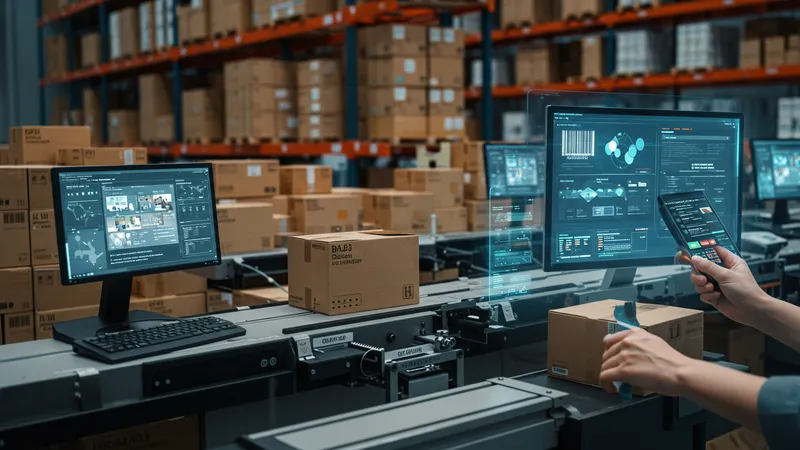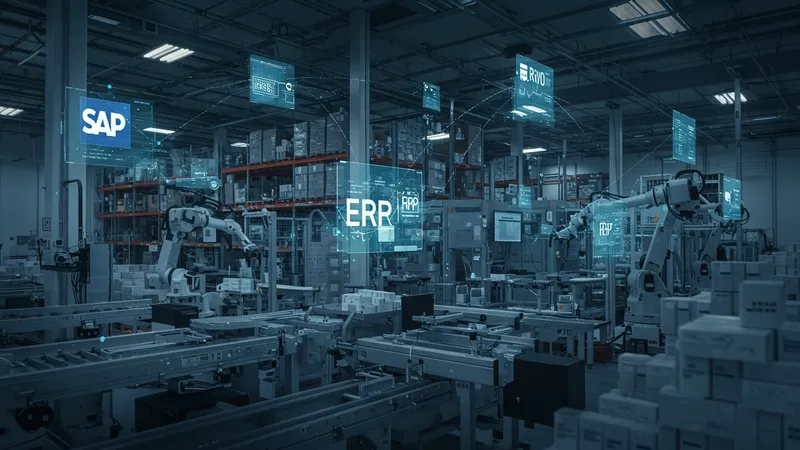

Imagine a seamless network where pharmaceutical products move swiftly from manufacturer to healthcare provider with precision and transparency at every stage. Automated business-to-business (B2B) pharma distribution achieves this vision by leveraging digital technologies to orchestrate, track, and audit medication supply chains. These advanced systems remove manual bottlenecks, reduce errors, and significantly enhance the ability to meet compliance requirements, making them increasingly vital in today’s complex pharmaceutical markets.
In practice, automated B2B pharmaceutical distribution platforms connect partners—manufacturers, wholesalers, and dispensaries—through digital interfaces that manage orders, inventories, and deliveries in real-time. These solutions employ backend algorithms and data exchanges, ensuring each transaction is logged, traceable, and meets regulatory standards. The outcome is faster movement of critical medicines and unmatched oversight, both of which are essential when lives depend on reliable supply.

The rising adoption of these industry-specific software suites showcases the relentless quest within pharma for speed, accuracy, and regulatory fulfillment. Unlike traditional paper-based logistics, automated platforms accelerate everything from batch release to last-mile delivery, allowing partners to respond quickly to market demand or emergency shortages. Moreover, compliance dashboards embedded in these solutions support seamless documentation for audits, further reducing manual workload and risk.
Comparing digital distribution methods to manual ones, efficiency gains are often striking. Automated notifications keep all stakeholders informed of delivery status or delays, eliminating confusion that typically results from email or phone-based coordination. Real-time data validation checks prevent errors such as incorrect dosage shipments or mismatched recipient details, protecting both business integrity and patient safety. Some platforms even offer predictive analytics, flagging potential problems before they impact the supply chain.
Regulatory compliance is a central challenge in global pharmaceutical commerce. Modern automated B2B distribution platforms are designed to automatically monitor for evolving guidelines such as DSCSA, EU FMD, or regional serialization mandates. By digitizing compliance documentation and maintaining tamper-evident transaction histories, they simplify preparation for audits and minimize costly compliance breaches. This is invaluable as regulatory frameworks tighten and penalties for non-compliance increase worldwide.
Speed, accuracy, and traceability are not merely buzzwords but operational imperatives. With patient safety and reputation on the line, stakeholders cannot afford delays, shipment mishaps, or compliance slip-ups. Automated B2B pharma distribution sets a higher bar for performance by offering real-time control and actionable intelligence. While the investment in these systems can be substantial, the long-term savings produced by fewer errors, minimized waste, and regulatory peace of mind often far outstrip the initial costs.
While the potential of automation in B2B pharma distribution is clear, the finer mechanics—including integration details, workflow optimization, and ROI demonstration—are where the most fascinating insights lie. The deeper details reveal even more valuable insights ahead…
What sets leading automated B2B pharma distribution solutions apart is a collection of features meticulously tailored to the industry’s demands for speed, accuracy, and compliance. Real-time inventory tracking, end-to-end traceability, and digital audit trails are standard elements in platforms such as SAP Integrated Business Planning for Pharma, Trace One Pharma Suite, and the IBM Supply Chain Intelligence Suite. Each system is constructed around the unique logistical and regulatory requirements at play in pharmaceutical commerce, significantly raising operational standards in the field.

One essential feature is real-time data synchronization across all parties. When a manufacturer ships a batch, the receiving wholesaler and downstream retailers are instantly alerted, minimizing lag in the delivery pipeline. For high-demand or temperature-sensitive medications, this immediacy can be crucial. Additionally, electronic proof-of-delivery and chain-of-custody logs mean stakeholders benefit from unbroken, auditable records—an advantage not found in legacy distribution approaches.
Another standout capability is automated compliance management, which responds dynamically to evolving regulatory frameworks. Platforms like Trace One Pharma Suite are continually updated to align with new serialization requirements or directives on reporting. AI-powered modules, like those within the IBM suite, proactively flag potential non-compliance events or risky inconsistencies, giving companies a chance to intervene before issues escalate into regulatory fines.
Usability is also a deciding factor in the success of automated distribution platforms. Intuitive dashboards, drag-and-drop shipment scheduling, and mobile accessibility put all necessary information at users’ fingertips. These workflow enhancements not only accelerate business processes but also reduce training time and the likelihood of error caused by manual data entry, making large-scale digital adoption more practical and immediately rewarding for pharma enterprises.
One of the most profound shifts brought by automated B2B pharma distribution is the near-elimination of costly manual mistakes that traditional systems struggle to contain. Technologies leveraged by SAP, IBM, and Trace One platforms—such as barcoding, real-time validation, and electronic shipping confirmations—offer multiple accuracy checkpoints throughout the movement of goods. Each step, from order entry to final delivery, is electronically tracked and error-checked, ensuring quality and traceability.

Manual data entry errors, including product mislabeling, quantity discrepancies, and outdated stock information, can lead to significant downstream risks. Automated systems instantly validate each field against master data and business rules, stopping incorrect orders in their tracks. This not only boosts patient safety but also preserves business partnerships by avoiding disputes over shipment contents or timeliness. Examples abound where barcode scanning and AI-powered checks have prevented expensive recalls or regulatory actions.
Speed is amplified by the reliability of automated platforms. With advanced data management, pharmaceuticals can move from manufacturer to point-of-care in hours rather than days. Predictive algorithms suggest optimal shipping routes, and real-time tracking enables rapid adjustments if delays arise. These improvements ensure that products, especially those requiring strict cold-chain logistics, reach their destinations intact and within required parameters.
The improved accuracy has measurable financial impact as well. Fewer returns or shipment discrepancies translate into direct cost savings across the supply chain. Importantly, the ability to generate granular reports on logistics performance and anomaly resolution also appeals to regulators assessing adherence to distribution standards. In tightly governed markets, this reporting functionality represents a decisive operational advantage.
Automated B2B pharma distribution platforms have become indispensable allies in the ongoing quest for regulatory compliance. With continually evolving laws around product serialization, electronic pedigree documentation, and end-to-end traceability, manual approaches simply can’t keep pace. Digital solutions from major vendors automate the generation, storage, and verification of essential compliance documentation, ensuring every shipment stands up to scrutiny at any audit checkpoint.

Trace One Pharma Suite, for example, integrates real-time monitoring mechanisms for regulations such as the EU Falsified Medicines Directive (FMD) and US Drug Supply Chain Security Act (DSCSA). These systems automatically validate serial numbers, track chain-of-custody, and ensure data integrity throughout the lifecycle of each product batch. Compliance dashboards offer real-time visibility into key compliance metrics, helping companies prepare proactive responses to new mandates.
Global distribution networks benefit immensely from compliance automation. As products move across borders, each jurisdiction may impose unique requirements. By centralizing and digitizing compliance controls, platforms like SAP and IBM accelerate customs clearances and reduce the likelihood of border delays. Furthermore, automated versioning and change tracking ensure that system documentation always aligns with the latest regulatory expectations, minimizing risk during external audits.
The result is a system that not only speeds up regulatory tasks but also delivers peace of mind. Companies can confidently scale their operations, knowing that every transaction is logged, verifiable, and always ready for inspection. Over time, this fosters greater trust among supply chain partners and regulators alike, opening pathways to faster innovation cycles and new market entry that might otherwise stall under manual compliance management regimes.
Integrating automated B2B pharma distribution platforms with existing enterprise resource planning (ERP) or warehouse management systems is often a top concern for supply chain leaders. Solutions from SAP, IBM, and Trace One are specifically designed to offer pre-built connectors and open APIs that facilitate swift integration. This seamless interconnectivity means data moves without interruption from procurement to fulfillment, amplifying the benefits of automation without disrupting core business functions.

Return on investment (ROI) for automated B2B pharma distribution systems is typically realized through a mix of operational savings, reduced compliance errors, and more responsive inventory management. Studies have demonstrated that by eliminating redundant processes and shortening cycle times, organizations can reallocate resources to higher-value activities. This agility becomes especially advantageous when responding to demand spikes, product recalls, or public health emergencies.
Looking forward, the future of automated B2B pharma distribution is poised for even more advancements. Emerging technologies, such as blockchain for immutable transaction records and AI-powered anomaly detection, promise further gains in speed, transparency, and security. Continuous updates from platform providers ensure that companies are always equipped to meet new regulatory challenges and market trends without skipping a beat.
Ultimately, embracing automation in pharmaceutical distribution will define the next generation of supply chain excellence. By underpinning daily operations with robust, intelligent, and compliant frameworks, pharma enterprises stand ready to deliver critical medicines faster and more reliably than ever before—meeting the highest standards demanded by regulators, healthcare providers, and patients alike.